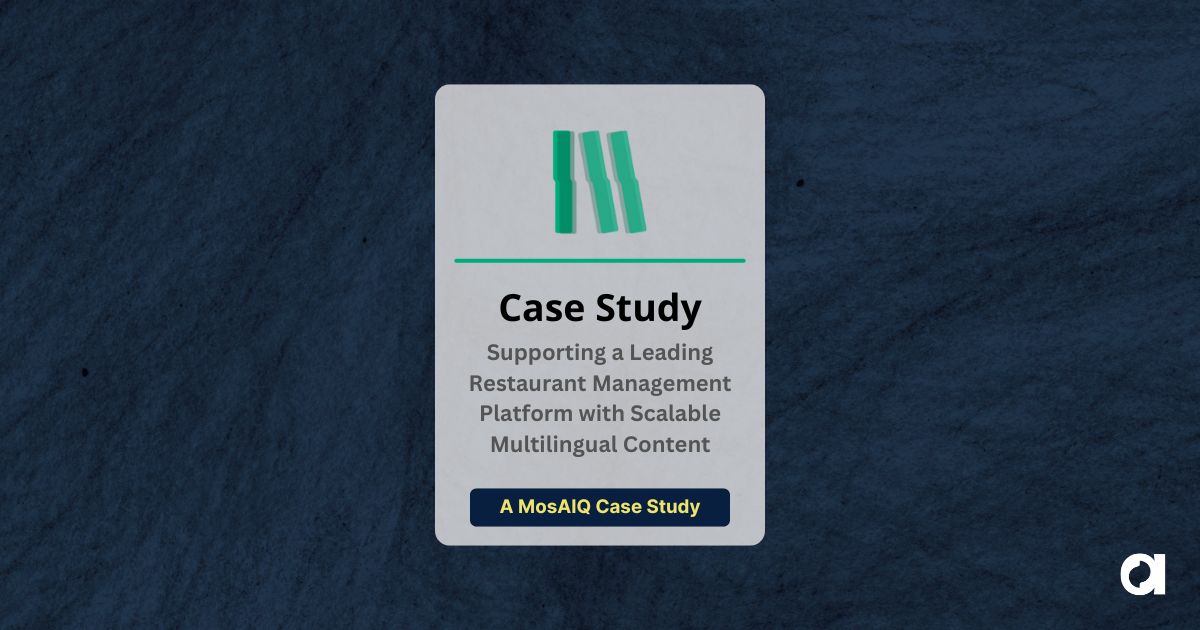Multimedia localization once focused on language, layout, and timing. As of 2025, it also has to meet digital accessibility standards.
With the EU Accessibility Act now in force, organizations are expected to make every digital asset, from videos and training programs to internal communications and eLearning courses, part of a broader accessible multimedia strategy. That expectation builds on long-standing accessibility standards such as WCAG 2.2 and EN 301 549, which originally applied to websites but now also include multimedia content. The law primarily applies to digital products and services offered within the EU, so training, learning, and marketing content for European audiences now falls under the same accessibility requirements as websites.

For global content teams, this change affects how scripts are written and how captions and audio are planned. Review cycles now look at usability as carefully as accuracy. Accessibility has become one of the measures of quality, shaping how content is designed and localized from the start.
Accessibility features improve how multimedia works in daily use. Captions and transcripts support people who are unable to rely on sound, and audio description communicates what visuals alone cannot. Building those elements into production makes content easier to understand, find, and reuse.
The Act extends the same standards applied to websites to multimedia content, making accessibility a condition of release rather than an optional improvement. In practical terms, quality now means meeting the same accessibility standards that have guided digital content for years.

What’s Changing from Web to Multimedia
Standards that once applied only to static web pages now have to account for motion, sound, and timing. WCAG 2.2 and EN 301 549 still define what makes content usable, but multimedia introduces additional elements—layered audio, pacing, and movement—that web design never had to handle.
The new standards are changing how multimedia projects come together. Teams plan timing and language at the same time, not in separate steps. Captions are written to match the rhythm of the voice track. Audio description is scripted early so it fits the recording instead of being squeezed in later. Decisions about pacing, sound, and contrast are made during production, not left for review.
Making Accessibility Part of Everyday Localization
For organizations that manage multilingual content, accessibility has become part of operational accountability. Enforcement of the EU Accessibility Act has changed the game for businesses and made inclusive design a requirement. The benefits, though, reach well beyond regulatory compliance. Accessible multimedia reduces the risk of exclusion and opens content to broader audiences who rely on captions, audio description, or alternative formats.
Planning for accessibility early also saves time. When accessibility is built into localization workflows, problems that used to appear in review are found and fixed sooner. Missing transcripts, inaccurate subtitles, and unusable file structures are resolved before production. Projects move faster, content stays consistent across languages, and accessibility becomes a natural part of your global content strategy.
Accessibility supports compliance, efficiency, and inclusion at the same time. Treating it as a working standard rather than a separate requirement keeps quality steady and reduces effort in the long term.
How Accessibility Shows Up in Production
In practice, accessibility weaves through every stage of multimedia localization. It shapes the work from the first line of a script to the last quality check before release.
A project typically starts with the script. Writers and directors tend to think about how meaning carries through sound alone. Language choices have to support tone and intent even when visuals aren’t available. From there, captioning teams pick up the same attention to clarity. Subtitles for the Deaf and Hard of Hearing include cues for music, sound effects, and speaker changes so that viewers receive the full experience. Accessibility planning also covers transcripts and player controls, ensuring that multimedia can be navigated and consumed with assistive technologies as easily as other digital content.

Audio description introduces another layer of craft. It adds short, precise narration that fits naturally between lines of dialogue, giving visual context to those who need it. The writer has to match the pace and mood of the recording while keeping the language consistent across versions.
Quality control closes the loop. Reviewers look beyond translation accuracy to check timing, readability, and technical compliance, applying the same Language Quality Assurance (LQA) principles used across all projects. They verify that captions appear at the right speed, that contrast meets accessibility standards, and that every localized file works with assistive tools. These checks rely on coordination among writers, linguists, engineers, and reviewers who treat accessibility as part of the same workflow, not a separate task.
Designing for Quality from the Start
Quality at Source means building quality into every step of production instead of checking for it afterward. The same approach drives accessible multimedia localization. When accessibility standards are part of the plan from the beginning, the results are both accurate and usable. That principle reflects the Quality at Source framework, where accessibility, translation, and engineering are planned together from the outset to prevent downstream fixes.

It starts with planning. Teams agree on standards for captions, audio description, and visual contrast before writing scripts or engineering files. Those early choices shape how translation, recording, and review unfold. Everyone involved works from the same foundation, which keeps language, timing, and accessibility aligned. File formats, authoring tools, and QA platforms must also support accessibility metadata and tagging so that content stays compliant through each localization stage.
The Quality at Source approach reduces duplication and shortens in-country review cycles. It gives clients and teams confidence that quality grows out of the process itself. Accessibility belongs in this framework because it depends on the same deliberate planning and attention to detail that define good work. The same structure that keeps quality consistent also supports accessibility when projects scale.
Creating Accessible Content at Scale
The same discipline that ensures translation accuracy also supports accessibility. Teams follow shared standards and plan together so every version of a file meets both language and usability goals.
At Argos, we apply this approach across industries where compliance and reliability are critical. Accessibility follows the same structure that keeps projects consistent and efficient. It’s not an extra task; it’s part of how the work holds together.
For organizations, the return shows up in engagement and content reuse. Accessible multimedia holds attention longer and performs better in search because transcripts and captions make every word indexable.
When accessibility is built into localization from the start, clients gain faster turnaround, fewer post-release fixes, and content that meets both compliance and usability goals. It brings the work back to its purpose—creating content that people can actually use.
Are your multimedia assets ready for the EU Accessibility Act? Contact us to learn how Argos helps teams build accessibility into localization from the start.
 Argos Multilingual
13 min. read
Argos Multilingual
13 min. read
Ask Better Questions: Solutions Design in a Complex World Join Stephanie Harris-Yee and Erik Vogt for an in-depth exploration of Solutions Design and its critical role in today’s rapidly evolving localization landscape. Erik shares insights from his LocWorld presentation on how strategic thinking and systems design are transforming the way we approach multilingual content challenges. […]

 Gabriel Karandyšovský
8 min. read
Gabriel Karandyšovský
8 min. read
Between October 14 and 16, the Argos Multilingual team once again traveled to the marquee industry conference, LocWorld54, in cool, sunny Monterey. Another conference on the circuit, another strong showing for our team, and an event packed with learnings and experiences. As before, we bring you the short and long of it, in case you […]










